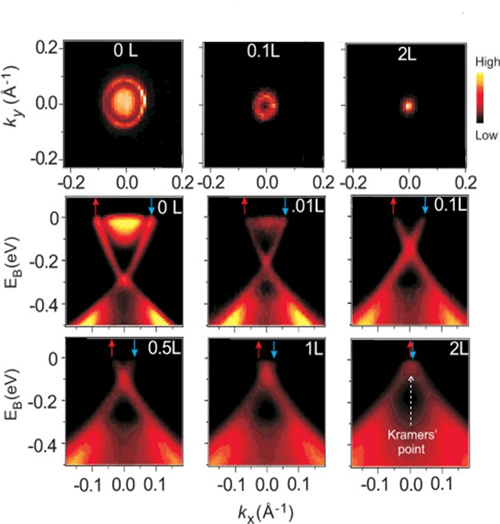Amazingly, the surface states of a 3D topological insulator can be directly imaged experimentally using the technique of Angle Resolved Photo Emission Spectroscopy - or, in short, ARPES.
In ARPES, X-ray photons are shot vertically into a metal surface in order to eject electrons out of it. Due to energy and momentum conservation, the emitted electrons have the same momentum (parallel to the surface) that they had in the crystal, and an energy which is related to their band energy in the crystal. Hence, ARPES is the ideal tool to measure the energy dispersion of the surface states of a solid, i.e. \(E(k_x, k_y)\) as a function of momenta \(\hbar k_x\) and \(\hbar k_y\).
Below, we see an example of ARPES spectra for the surface states of a strong topological insulator Bi\(_2\) Se\(_3\):

(copyright Hasan lab, Princeton, see license in the beginning of the chapter)
ARPES can only eject electrons - so only occupied states below the Fermi level are visible in the experiment, but of course one can still map out the Fermi surface at different energies by changing the chemical potential in the crystal. In the ARPES results above we see the results for different dopings of the crystal.
In the top panel of the figure above, we see that by changing the chemical potential, the Fermi surface shrinks from a circle to a point, exactly what you would expect for electrons with a Dirac-like dispersion.
While the top panels shows where the occupied states lie in the \((k_x, k_y)\) plane, in the second and third rows we see a cross-section of the energy as a function of momentum, where the Dirac cone is clearly visible, emerging from a bulk valence band filled with electrons.